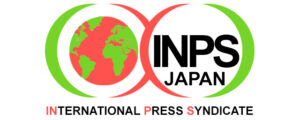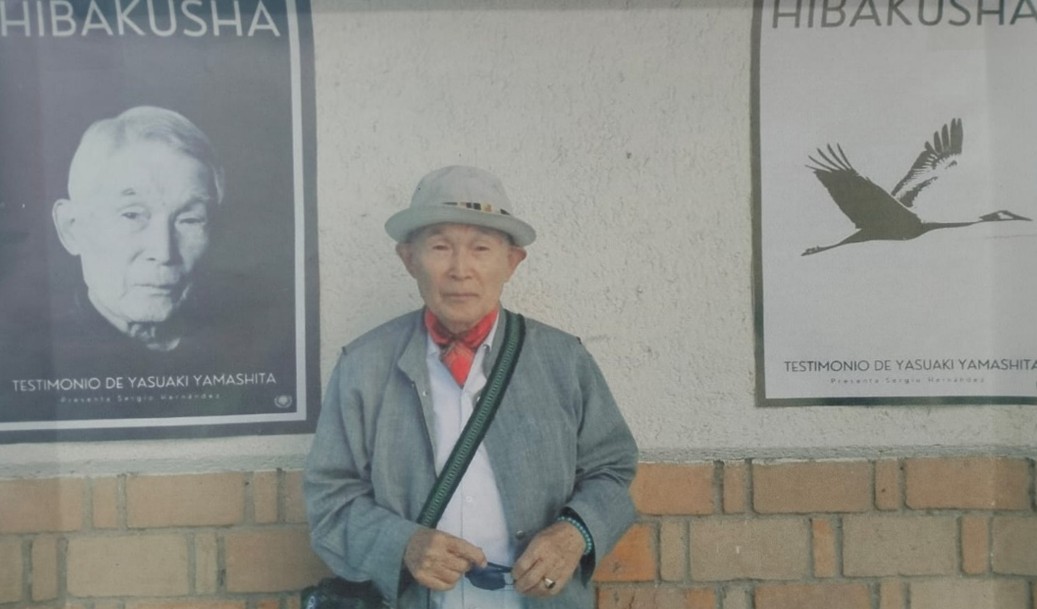By Guillermo Ayala Alanis

Mexico City(INPS Japan)- Eighty years ago, the world witnessed the destructive power of perhaps the most devastating weapon ever unleashed by humankind. The Japanese cities of Hiroshima and Nagasaki became the scenes of one of the darkest chapters in human history when they were targeted with nuclear bombs. Their destruction and human toll have reverberated across generations. More than 200,000 lives were lost, yet some who survived—now in their 80s or older—continue to raise their voices with strength and conviction, calling for peace and the abolition of nuclear weapons.|SPANISH|JAPANESE|RUSSIAN|
At the Universidad Autónoma Metropolitana, Cuajimalpa Campus (UAM Cuajimalpa) in western Mexico City, Yasuaki Yamashita, a survivor of the Nagasaki bombing of August 9, 1945, shared his testimony before dozens of attendees at a conference dedicated to remembering that tragic day.
He urged the audience to carry forward the prayer for peace of all those who endured the horror of the atomic bombs, so that the message would spread like ripples across water. “The small voice of each one of you can spread throughout the world. These voices will travel far and wide, and one day we will be able to live without the threat of nuclear weapons. That is what we want—we want peace,” Mr. Yamashita emphasized.
A Childhood in Flames: Yamashita’s Testimony

Mr. Yamashita’s recollections transport us directly to that fateful morning. He was just six years old when an extraordinary flash—“like a thousand bolts of lightning striking at once”—lit up the sky, marking the onset of incomprehensible horror. He remembers being at home with his family when the bomb detonated. Their house, located about 2.5 kilometers from the blast’s epicenter, collapsed under a storm of radiant heat and shockwave. His sister, in another part of the house, was wounded by shards of glass. Terrified, she mistook her bleeding head wound for “dangerous oil used by the U.S. military”.
Destruction was everywhere. Buildings, roads, and homes lay in ruin. Many perished instantly while others were gravely injured. Amid the chaos, the city’s hospitals were decimated; medical personnel were killed or incapacitated, leaving survivors without care. Starvation followed. Families walked for miles through the rubble to reach farmland, bartering whatever valuables remained for food. Yamashita recalls walking through devastation, the horror at once surreal and painfully real.
From Silence to Testimony: A Journey of Healing

For years, Yamashita remained silent about his experience. The stigma of radiation survivors in Japan—marked by fear, prejudice, and the belief that the “contagion” of their illness could harm others—forced many hibakusha into quiet solitude. He began his career in 1960 at the Japanese Red Cross Hospital for atomic-bomb survivors (Nagasaki Genbaku Byoin), administering care—but also forging a bond with patients suffering from radiation-related illnesses. One leukemia patient, close in age to him, whom he frequently donated blood to, died tragically. The experience of witnessing this decline etched a heavy reminder in Yamashita: he too could fall ill at any moment.
In that environment, the trauma and the discrimination he witnessed—especially against young women fearful of having children affected by radiation—led him to conceal his hibakusha identity. Yet, his connection to Mexico would spark a dramatic turn in his life story. Inspired by Japanese fascination with Mexican culture—boleros by Los Panchos, muralism, and indigenous history—he began studying Spanish and Meso-American culture passionately. In 1968, during the Mexico City Olympics, he was chosen as an interpreter for the Japanese delegation and decided to stay. In Mexico, he deepened his cultural learning, studied Nahuatl, became an interpreter and translator for Japanese firms, and eventually became a Mexican citizen.
Only in 1995, while in Querétaro, did he break his long silence as a hibakusha and begin speaking publicly. Initially reluctant, he gradually embraced public testimony as a form of healing—and activism—it became his mission to bear witness and advocate for a world free of nuclear weapons.
A Young Artist’s Tribute: Manga Meets Memory
Back in Mexico City, the power of Yamashita’s story resonated deeply with students—among them, Jessica Escandón, a humanities student at UAM Cuajimalpa. Moved by his testimony, she created an exhibition melding manga art with photographs of Hiroshima and Nagasaki victims, located in the Miguel León Portilla Library. Titled Hiroshima and Nagasaki: Testimony of Survival and Resistance, it featured 34 pieces, depicting the horror and heartbreak of those August days in 1945. Yamashita’s face appeared as a symbolic anchor: a hibakusha’s enduring resistance.
“People like Yasuaki are now 80 years old or older. The responsibility falls on young people now. This is not something that should be treated superficially, as many schools have done. We must raise awareness. This is something that must never be forgotten,” Jessica said.
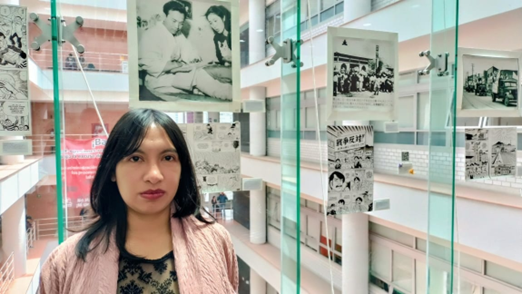
A Legacy Preserved in Print
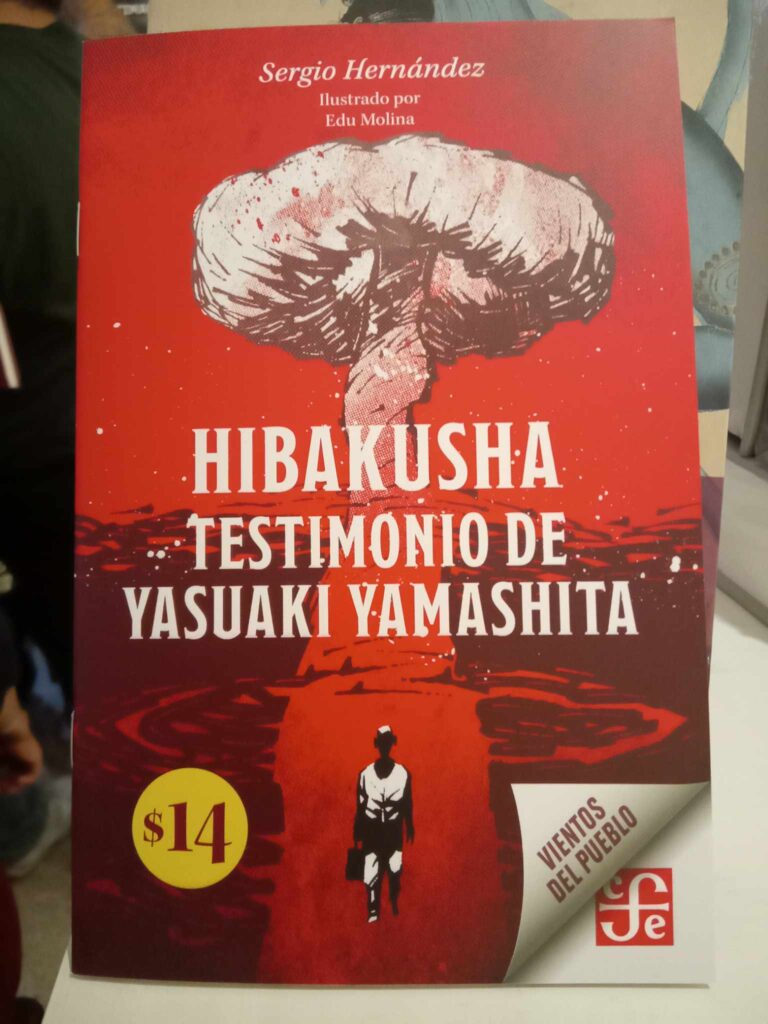
At the event, the book Hibakusha: Testimony of Yasuaki Yamashita was also launched. Written by Dr. Sergio Hernández and published by Fondo de Cultura Económica, the work chronicles Yamashita’s life—from surviving Nagasaki and the persistent discrimination afterward, to his emigration to Mexico, and his eventual role as an activist and artistic creator.
“It’s a short but very moving book. What struck me most was the discrimination he endured… it was powerful, the fact that people wanted to hide it,” Jessica reflected.
The venue was adorned with a thousand colorful paper cranes—a Japanese symbol of peace and a pledge against war—intended to inspire healing and solidarity. “Folding a thousand cranes represents a promise to prevent the continued production of such terrible weapons. It’s become a symbol of the pacifist movement,” explained Dr. Hernández.
A Call to Action Across Borders
Mr. Yamashita took the opportunity to deliver a powerful warning: humanity has yet to fully learn from the horror of Hiroshima and Nagasaki. “We have worked for years in favor of disarmament, but the world is moving in the opposite direction. More and more nuclear weapons are being produced. Humanity has not truly learned from the tragedy,” he stressed.
He reiterated that no country is immune—even seemingly neutral ones like Mexico, which share proximity with nuclear-armed neighbors. “The movement for peace and a nuclear-free world must resonate not only in pacifist nations, but also in countries that possess nuclear arms—such as Russia, the United States, China, and North Korea—that continue to use nuclear threats as deterrence.”
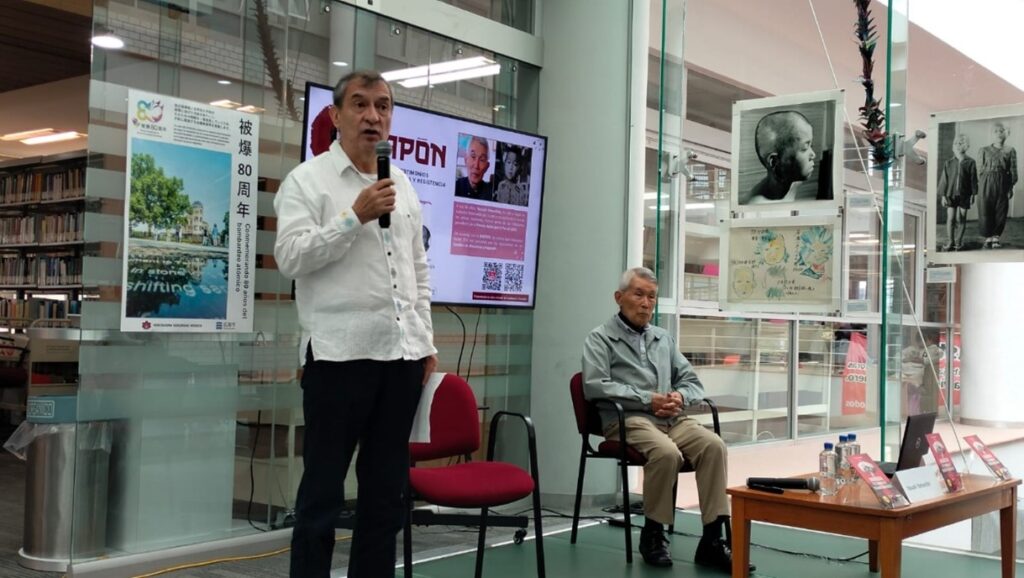
Legacy of Light: From Memory to Movement
From the ruined streets of Nagasaki to the lecture halls of Mexico City, Yasuaki Yamashita’s journey epitomizes the ripples of peace that can emerge from a single voice, when raised with courage. His experiences—surviving an apocalyptic blast, enduring neglect and prejudice, leaving his homeland to find new beginnings, and ultimately emerging as a voice of conscience—remind us that peace demands not only memory, but action.
May his “small voice,” joined with others, travel the globe and one day bring us to a world untainted by the threat of nuclear weapons.
This article is published by INPS Japan in collaboration with Soka Gakkai International, in consultative status with the UN ECOSOC.


